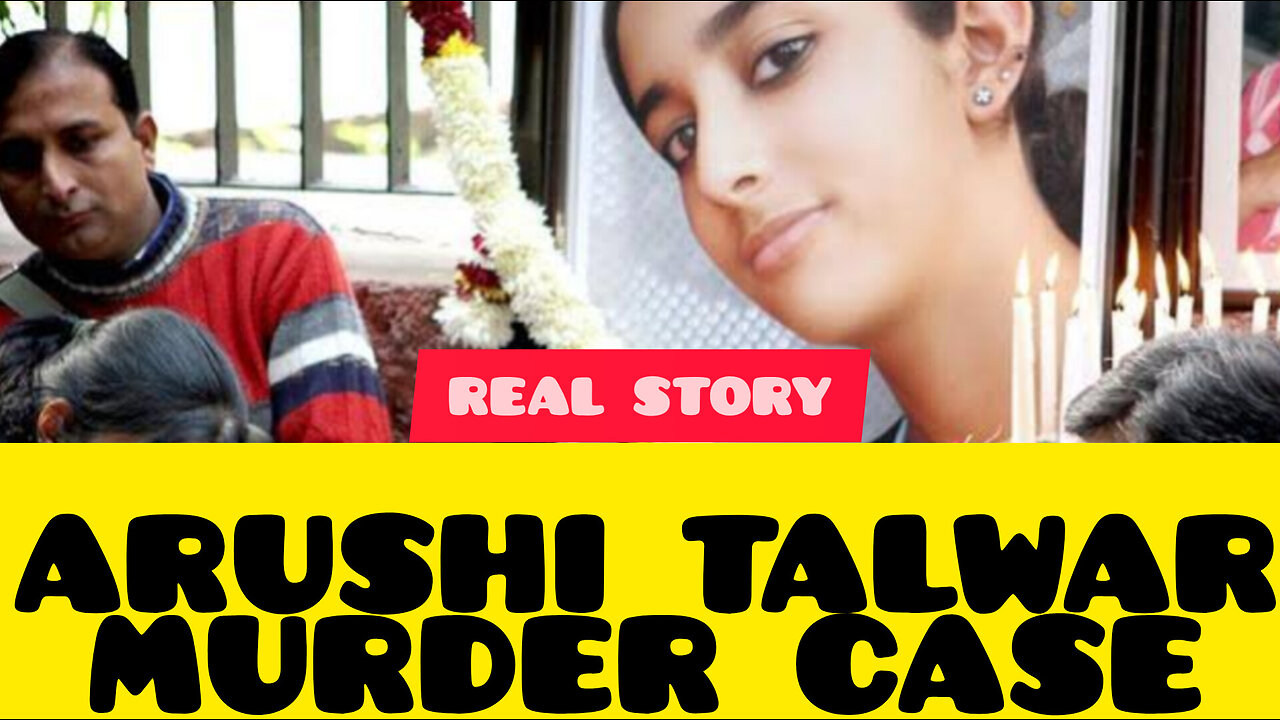Premium Only Content

AARUSHI TALWAR MURDER CASE
The Aarushi Talwar murder case is one of India's most controversial and widely publicized criminal cases. It revolves around the tragic deaths of 13-year-old Aarushi Talwar and the Talwar family's domestic helper, Hemraj Banjade, at the Talwar residence in Noida, Uttar Pradesh, in May 2008. Here’s a brief overview of the case and its developments:
### 1. **The Incident**
- **Date**: May 16, 2008.
- **Victims**: Aarushi Talwar, 13-year-old daughter of Rajesh and Nupur Talwar, and Hemraj Banjade, the Talwars' domestic help.
- Aarushi was found dead in her bedroom, with her throat slit and head injured. Initially, suspicion fell on Hemraj as he was missing. However, Hemraj's body was found the following day on the terrace of the same building.
### 2. **Initial Investigation and Suspicions**
- The initial police investigation was criticized for mishandling evidence and delaying key processes, like securing the crime scene.
- The Noida police first suspected the parents, particularly Dr. Rajesh Talwar, due to the theory of an "honor killing." Allegations emerged that the parents killed Aarushi after discovering her with Hemraj, though this theory was later contested.
### 3. **CBI Involvement and Changing Narratives**
- The Central Bureau of Investigation (CBI) took over the case due to the controversial handling by local police.
- Over the years, multiple CBI teams worked on the case, leading to varying conclusions. Initially, one CBI team suggested that there wasn’t enough evidence against the parents and recommended closing the case.
- A second CBI team later reexamined evidence, leading to Rajesh and Nupur Talwar being charged based on circumstantial evidence.
### 4. **Trial and Conviction**
- In November 2013, Rajesh and Nupur Talwar were convicted of murder by a CBI court, receiving life sentences. The verdict was largely based on circumstantial evidence, as no conclusive forensic evidence directly linked them to the murders.
### 5. **Appeals and Acquittal**
- In October 2017, the Allahabad High Court acquitted the Talwars, citing a lack of direct evidence and contradictions in the CBI's narrative. The court ruled that there was "insufficient evidence" to convict them, and the benefit of the doubt was given to the accused.
### 6. **Key Controversies and Public Reaction**
- The case raised several issues regarding police and investigative misconduct, media sensationalism, and the nature of circumstantial evidence.
- Public opinion was sharply divided, with debates about the reliability of forensic evidence and judicial fairness.
The Aarushi Talwar case remains unsolved, as the true culprit(s) have never been identified. It is a poignant example of how investigative failures, media interference, and judicial ambiguities can complicate high-profile criminal cases.
-
 UPCOMING
UPCOMING
Dear America
13 hours agoTrump Eyes the Papacy?! Michigan’s Lib Governor Goes MAGA — For a Day!
2.51K -
 UPCOMING
UPCOMING
Wendy Bell Radio
4 hours agoIt's The Trump Show
2.1K13 -
![🔴[LIVE] STOCKS FALL: Inflation Report, GDP Data & Live Trading || The MK Show](https://1a-1791.com/video/fww1/b5/s8/1/d/P/o/G/dPoGy.0kob.1-small-LIVE-STOCKS-FALL-Inflation-.jpg) LIVE
LIVE
Matt Kohrs
9 hours ago🔴[LIVE] STOCKS FALL: Inflation Report, GDP Data & Live Trading || The MK Show
12,645 watching -
 LIVE
LIVE
LFA TV
11 hours agoALL DAY LIVE STREAM - WEDNESDAY 4/30/25
8,608 watching -
 LIVE
LIVE
Chicks On The Right
2 hours agoTrump's contentious ABC interview, Trump's truths and trolls, and is AOC gonna run for president?
1,820 watching -
 25:15
25:15
Producer Michael
16 hours agoTOURING A $10,800,000 LAS VEGAS MODERN MANSION!
21.1K3 -
 LIVE
LIVE
BEK TV
23 hours agoTrent Loos in the Morning 4/30/2025
3,495 watching -
 15:35
15:35
The Illusion of Consensus
1 day agoRav Arora Warns Danger of Mass Immigration In Canada
13.8K8 -
 26:33
26:33
CatfishedOnline
1 day agoI Sent $150k And Sold My Home For Online Love!
52K17 -
 7:37
7:37
The Shannon Joy Show
13 hours ago💀 Doctor Death: NY’s Suicide Bill
26.1K10